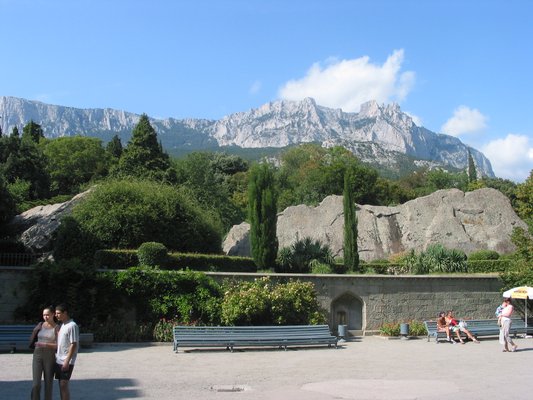A coastal resort on the Black Sea, known for its mild climate and historic Livadia Palace, site of the 1945 conference between Allied leaders.
Yalta, a resort city on the southern coast of Crimea, has a mild climate and pebble beaches. You can explore grand palaces like Livadia and Massandra, stroll along the active seafront promenade, or take a cable car ride for panoramic views of the Black Sea. The city was the final home of Anton Chekhov and the site of the famous Yalta Conference during World War II.
Climate and Location
Yalta sits on the southern coast of the Crimean Peninsula, between the Black Sea and the Crimean Mountains. The city has a humid subtropical climate, with mild winters and warm summers. Average temperatures in February are around 4°C (39°F), while July sees averages of 24°C (75°F). The surrounding mountains protect Yalta from cold northern winds, creating a microclimate that's milder than other parts of Crimea.
Beaches and Seafront
The city's coastline stretches for several kilometers, with pebble beaches frequented by locals and tourists. Two of Yalta's beaches have Blue Flag status, recognizing their cleanliness and water quality. The seafront promenade, known as the Naberezhnaya, is the heart of the city. Here, you'll find street performers, cafes, and shops. It's a good spot for an evening stroll or people-watching.
Historical Palaces
Yalta and its surroundings have several palaces that reflect the area's imperial past. The Livadia Palace, a former summer residence of the last Russian Tsar, hosted Roosevelt, Churchill, and Stalin for the Yalta Conference in 1945. You can visit the palace's white limestone façade and ornate interiors. Nearby, you can explore the Massandra Palace, built for Alexander III in a mix of styles including French château and English castle.
Museums and Cultural Sites
At the White Dacha, Anton Chekhov's house-museum, you can learn about the famous writer's life and work. Chekhov spent his final years in Yalta, writing some of his most renowned plays here. The museum has the original furnishings and personal items of the author. For a broader view of local history, visit the Yalta Historical and Literary Museum, which has exhibits on the city's past from ancient times to the present day.
Natural Areas
The Nikitsky Botanical Garden, located just outside Yalta, is one of the oldest and largest botanical gardens in Eastern Europe. It contains over 50,000 plant species and provides views of the coast. For a more adventurous experience, take the cable car to the top of Darsan Hill to see Yalta and the Black Sea from above. You can also hike the Tsar's Path, a scenic trail that stretches from Livadia to Gaspra.
Getting Around
You can reach Yalta via the trolleybus from Simferopol, which is the longest trolleybus route in the world. Within Yalta, marshrutkas (minibuses) are a common and inexpensive way to get around. Taxis are also readily available, but agree on the fare before starting your journey.
Local Cuisine
Crimean cuisine reflects the region's various cultural influences. In Yalta, you can try traditional Crimean Tatar dishes like chebureki (deep-fried turnovers with meat filling) and lagman (a hearty noodle soup). Seafood is common on local menus, with Black Sea fish like mullet and flounder often featured. Consider trying Crimean wines, particularly those from the nearby Massandra winery, known for its dessert wines.










